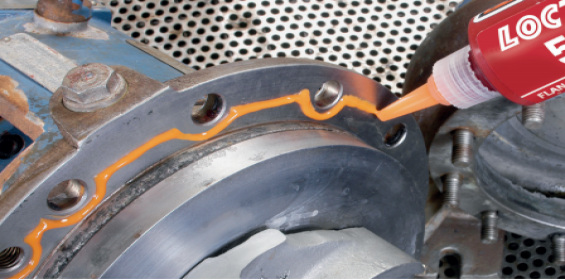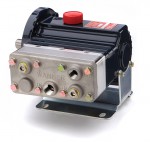Surround yourself with pump expertise
Published: 21 April, 2021
Most pump failures are maintenance or installation-related and that is good news because it means that a lot can be done to minimise the risk. Proactive maintenance is key to eliminating common failure. It extends the useful life of the pump and increases both its efficiency and reliability. Bob Orme* reports.
The use of engineering adhesives and compounds, for example from Loctite, can play a significant part in all stages of the pump’s life from assembly and installation to repair, preventative maintenance and disassembly. Indeed, they are increasingly saving costs not only by preventing both minor and major failure but also allowing parts to be restored to an ‘as new’ condition, avoiding scrap and replacement costs.
Simple steps can be taken, using engineering adhesives and compounds, to help reduce or eliminate common failures, so let’s start with the bearing frame and housing. Many components have air space between the threads and this can lead to oil leakage especially when pressure changes.
Leak prevention
The application of an anaerobic thread sealant prevents leakage through the fittings and prevents loosening, allowing for easy disassembly with normal hand tools. As well as averting the pump running low on lubricant, this also eliminates rust and corrosion within the thread space and prevents ingress of contaminants into the oil. Other applications include the prevention of corrosion within the gland flushing connector.
Chemical resistant coatings are another means of helping to prevent oil loss from seepage. These are ideal for sealing cast parts that may have porous areas created during their manufacture. By coating the interior of a bearing frame during assembly, for example, any danger of leakage is eliminated. Or if you know where the leak points are, a wicking grade thread locker is a good choice to create an effective seal.
A thread locker is also good to apply to the outside diameter of the oil seal to fill any small air spaces that can create a leak path. This product is a proven method of preventing selfloosening and corrosion on all threaded assemblies such as frame adapter mounting bolts, pump casing bolts and gland studs. In the same way a thread locker can ensure the stability of couplings to avoid the potential of disengagement, damage or misalignment. It is also eminently suitable for preventing keyway wear by securing the key in the keyway.
Anti-seize products are of course vital to preventing corrosion and seizure. Any exposed metal parts on a pump that are not stainless steel or coated, such as power end bolts and lock nuts, are subject to rust. Similarly, dowel pins are exposed to the exterior pump environment and without protection they will seize within the bearing frame.
Liquid gasketing and retaining
Cut gaskets suffer from inherent problems such as relaxation, shrinkage, extrusion and breakage, all of which can lead to leaks. The simple answer is to eliminate the need for a gasket altogether but using a liquid gasketing adhesive instead, a move that also seals all the air space between the parts. Typical applications are between the bearing frame and adapter and the stuffing box and pump casing.
Bearings are prone to fretting or spinning either on their shafts or within their housing, resulting in damage, regardless of whether they have been pressed, shrink or slip fitted in place. Their life is also compromised if an air space exists between the bearing and shaft where rust can form. Here a retaining compound is an excellent choice to prevent bearing spin, corrosion and component damage.
Rebuild and repair
Pump casing and impellers are commonly subject to wear from abrasive slurries, solids, cavitation and chemical attack. For this purpose, there is a choice of metal filled compounds and wear resistant putties to rebuild worn cutwaters, wear ring seats, impeller vane tips and other specific areas of the casing. A top coat of brushable ceramic provides a high gloss, low friction finish to help ensure the pump runs as close as possible to its best efficiency.
Epoxies also have an important role to play in pump component restoration. They are typically used to restore a worn shaft whose surface has been damaged through constant pressure and abrasion. Oil seals can also cut a groove in a shaft over time. The use of an epoxy with high compressive strength can quickly return the part to full service.
*Bob Orme - senior technology specialist, Henkel Engineering Adhesives Division
https://www.henkel.co.uk/brands-and-businesses/adhesive-technologies
https://www.linkedin.com/company/henkel/
https://www.facebook.com/henkel






 WANNER INTERNATIONAL says Hydra-Cell pumps are increasingly being specified and retrofitted in pipeline sampling installations used for analysis during oil transfer - data that can be essential for identification or quality measurement purposes.
WANNER INTERNATIONAL says Hydra-Cell pumps are increasingly being specified and retrofitted in pipeline sampling installations used for analysis during oil transfer - data that can be essential for identification or quality measurement purposes.
